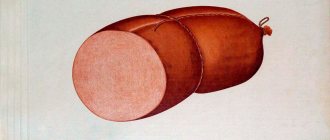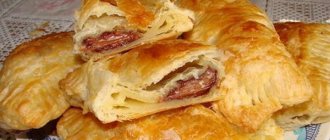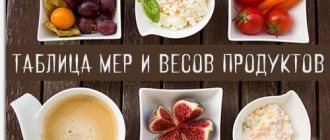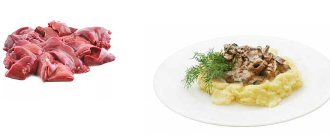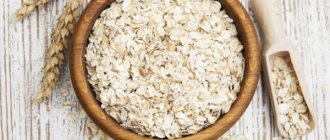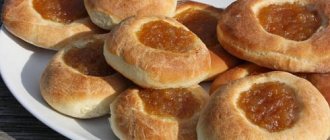What determines the calorie content of cereals?
Most cereals are based on carbohydrates, 75%, the rest are proteins and fats. Grains are a natural source of energy. They are rich in fiber, many micronutrients and vitamins.
The calorie content of each type of cereal depends on the ratio of BZHU in it. The more complex carbohydrates and fatty acids a product contains, the higher the energy composition of the cereal.
The greatest usefulness is preserved with minimal processing of the dry ingredient. Many manufacturers, before packaging, steam, grind or crush the grains. This procedure significantly reduces the valuable qualities of cereals, but at the same time increases their calorie content.
Calorie content of different types of cereals in dry form: table
Today, there are a huge number of different types of cereals on store shelves.
Determining the energy component of a product is not difficult. To do this, you do not need to constantly have a bunch of tables or diagrams on hand. All information about the composition of the product can be obtained by carefully studying the packaging. Products sold by weight in supermarkets must have a detailed description.
The most commonly consumed cereals in our region include buckwheat, rice, pearl barley, peas and, of course, oatmeal. White rice is considered the highest calorie among raw ingredients, and oats are considered the most dietary. The calorie content of cereals in the table is indicated in descending order.
Be sure to read: How many calories are in oatmeal porridge with water and milk, calorie content of oatmeal with honey per 100 grams
Table No. 1 Raw products (based on 100 g)
| Name | kcal |
| Round white rice | 351 |
| Golden rice | 348 |
| Millet | 347 |
| Manna | 337 |
| Brown rice | 336 |
| Corn | 335 |
| Pearl barley | 323 |
| Barley | 321 |
| Barley | 320 |
| Wheat | 315 |
| Buckwheat core | 311 |
| Buckwheat done | 304 |
| Oatmeal | 303 |
Other types of cereals consumed
Buckwheat porridge, the calorie content of 100 grams of which reaches 329 kcal, is one of the most favorite products among people who monitor their own weight and strive to lose weight. It is rich in iron, calcium, vitamin B and easily digestible proteins.
Doctors recognize the consumption of buckwheat porridge as one of the most effective non-drug ways to prevent cardiovascular diseases.
It is buckwheat that is effective in cases of edema, hypertension, and liver diseases. When consumed, you can restore the upset functioning of the stomach and digestion. This property of buckwheat porridge is due to the presence of a natural substance in its composition - quercetin, which is also recognized as effective in the treatment and prevention of cancer.
Semolina porridge with 326 kcal per 100 grams of dry cereal is also useful for a healthy body. The dish is high in gluten (vegetable protein), and porridge is indicated for various gastrointestinal diseases. However, over the past few years, nutritionists have slightly changed their attitude towards this product, since gluten can provoke allergic reactions and wash calcium from the body.
The favorite dish of many North Caucasian peoples is corn porridge with 325 kcal per 100 grams. This product, in addition to many vitamins, contains silicon, which has a beneficial effect on the condition of teeth. As one of the lowest calorie porridges, corn porridge is effective for weight loss and removes excess fat from the body.
Indicated for weight loss and anemia and the lowest calorie porridge - pearl barley (324 kcal in 100 grams of dry product). This dish contains a lot of vitamin B and microelements. It is pearl barley porridge that is prescribed to people suffering from allergic reactions to many foods.
Calorie content of different types of cereals in finished form
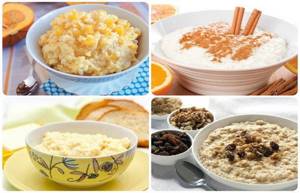
As a rule, the calorie content of the dry ingredient and the finished dish do not match. This is explained by the fact that during the cooking process the component changes its structure, becomes soft, and becomes heavier.
The calorie content of prepared food is influenced by several factors:
- original ingredient;
- what the food is prepared with: water, milk (the percentage of fat content is taken into account);
- the presence of additional spices (sugar, salt) and additives (butter, honey, dried fruits, berries).
The less additional components are used during the cooking process, the more dietary the finished dish will be. People who want to lose weight are recommended to eat porridge in the first half of the day.
Semolina, buckwheat or oatmeal, which porridge is healthier for weight loss?
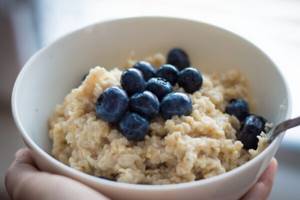
Dry cereal contains about 400 kcal/100 g
Do you still think that semolina with milk, imposed on us since childhood, is healthy? Don't eat instant porridge because you're afraid of dire health consequences? Are you doing fasting days on empty rice? AiF.ru asked the author of the book “Intestines with Comfort, Stomach without Problems,” PhD, gastroenterologist Alexei Paramonov, to explain in detail which established recommendations regarding porridges can be trusted and which ones should not.
We think : Semolina porridge is very healthy, it’s not for nothing that it is given even to children.
In fact : Semolina, if it is not manna from heaven, is one of the most mythologized and harmful products in our kitchen. This is a kind of semi-flour made from soft varieties of wheat, which, at a time when there were no mixtures for therapeutic nutrition, was ideal for seriously ill patients. It was given in liquid form with butter. Today it is suitable for those who want to gain weight; to do this, you need to add butter, sugar or jam to the porridge. Yes, this is not useful, but sometimes patients come with such requests too, so one of the measures that can really help is just such a mess.
Let me note that there is semolina made from durum wheat, which is used in industrial production to give shape to various products. Porridge made from it would be healthier, but not as tasty.
Summarizing what has been said, I propose in most cases to retire the semolina, unless you are faced with the task of eliminating a weight deficit.
We think : Buckwheat will be much healthier if you do not cook it, but simply soak it in cold water and let it stand for several hours.
In fact : If you soak buckwheat for a day or two, it will, of course, soften and you can even chew it. It will retain more vitamins. But it’s the aroma and unique taste of boiled buckwheat that we love. By the way, it will retain slightly less vitamins and minerals than in a strange soaked product. I know lovers of buckwheat flour brewed with boiling water and respect these martyrs of a healthy lifestyle, but I advise everyone to cook buckwheat in the most pleasant way for them. Its main value is dietary fiber, low glycemic index, and iron. Cooking has no effect on this. In addition, it is worth remembering that the familiar aromatic buckwheat has already been heat-treated in production; whether it is soaked or boiled is mainly determined by personal culinary preferences.
We think : Instant porridges are harmful and even dangerous to health.
In fact : Many of us remember Hercules cereal well from childhood. This is a prototype of instant porridge. Such products are obtained by flattening grain with a press, they are heated with steam and do not do anything indecent. The fact that these porridges are prepared quickly is quite natural after such procedures. They retain almost all the qualities of the original cereal, and the overall heat treatment time is even shorter. Problems with porridge from bags may most likely be due to flavorings and flavor enhancers, nuts and dried fruits that are added there. Who knows what you might be allergic to. Often such products are sweet, so always look at how much sugar the manufacturer puts in: the less, the better.
We think : If you want to lose weight, it is better to completely exclude all kinds of cereals from your diet, they are very high in calories.
In fact : The calorie content of porridges is not that high. Dry cereal contains about 400 kcal/100 g. But ready-made porridge contains 4 times less. Although if you add butter and sugar to it, you can get a dessert. If you are aware of the true caloric content of dishes, then porridge can be a component of any diet, including those aimed at weight loss. For example, today's popular bulgur, which provides a long-lasting feeling of fullness and slow release of carbohydrates, serves this purpose well. But rice pilaf is delicious, but incredibly high in calories with peaks of glucose and insulin after eating - no.
Undoubtedly, vegetables as a side dish are lower in calories, but they will not create a feeling of fullness in the stomach for a long time. Therefore, in any diet, porridge can be included and contribute to weight loss if used wisely.
We think : Empty rice without oil and salt is ideal for fasting days; it perfectly “cleanses the intestines.”
In fact : If we proceed from the assumption that rice without oil and salt has a rare nasty taste and you won’t eat much of it, then this statement probably makes sense. Rice itself is one of the “useless” foods. It has little fiber, in addition, it is almost never converted into glucose. As for the idea of “colon cleansing,” it is unscientific. However, if we imagine that such a task faces us, then we need plant fibers: vegetables, herbs, pearl barley, bulgur. But not rice.
Source: AiF
Calorie content of porridge with water (table) in 100 grams
The most dietary option for preparing cereals is boiling them in water. Under the influence of liquid, the grains swell and become heavier. A hundred gram volume of finished food will have less calories than the same amount of dry matter.
Table No. 2. Calorie content of a dish boiled in water (per 100 g)
| Variety of cereals | Kcal |
| Lentil | 111 |
| Wheat | 107 |
| Buckwheat | 98 |
| Millet | 91 |
| Oatmeal | 85 |
| Pea | 89 |
| Barley | 76 |
| Pearl barley | 63 |
Calorie content of porridge with milk: table
Including milk will add extra calories to the dish. However, you should not neglect milk porridges. The product contains a lot of protein, healthy fats, and calcium.
If you do not add sugar, salt, or vegetable oil to the finished dish, then porridge with milk will absolutely not harm your figure.
Table No. 3. Calorie content of porridge boiled in milk (per 100 g)
Be sure to read: What are the benefits of corn porridge for the body: properties, how many calories, features of consumption
| Variety of cereals | Kcal |
| Wheat | 127 |
| Hercules | 135 |
| Manna | 105 |
| Millet | 123 |
| Corn | 120 |
| Oatmeal | 104 |
| Barley | 110 |
| Rice | 97 |
Semolina
Calorie content of semolina porridge
- Semolina with milk - 98 calories.
- Semolina with water – 80 calories.
The benefits of semolina porridge
- Microelements (15).
- Vitamins (7).
Harm of semolina porridge
- May cause diarrhea (diarrhea).
- Not hypoallergenic.
- Lots of gluten.
Preparation:
- Add salt to the pan (to taste).
- Add sugar (to taste).
- Pour milk over sugar and salt.
- Bring to a boil.
- Sprinkle the cereal in a stream (with your left hand).
- Stir the porridge (with your right hand).
- When the cereal is poured into the pan, cook it for no more than a minute.
- Turn off the heat and cover with a lid.
- After fifteen minutes, add oil.
Is it possible to eat porridge on a diet?
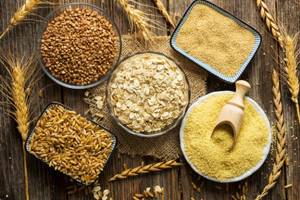
Experts in the field of proper nutrition recommend eating porridge for breakfast. Cereals are quite a filling and nutritious option for a morning meal.
In order for the product to bring maximum benefit, you should adhere to a number of simple rules:
- Choose whole grains, they contain more protein, fiber, and retain essential microelements and vitamins for humans.
- The ideal version of porridge is made with water, without adding other ingredients. Sugar is prohibited. Salt is used to a minimum.
- To add flavor, the food can be flavored with a spoonful of honey, pieces of vegetables, fruits, berries, nuts, and herbs.
- The most effective option is to alternate different types of grain. The body receives varied and healthy nutrition throughout the week.
A special express diet has been developed based on cereals. It is designed for 3-5 days. During this period, you are allowed to eat only porridges prepared using a special method.
Cooking method:
- Ø pour 4.5 tablespoons of cereal (buckwheat, oatmeal) into a container;
- Ø pour boiling water over the mixture;
- Ø leave tightly wrapped for 20-30 minutes;
- Ø add a little water, boil for 5 minutes;
- Ø Divide into 3 portions;
- Ø Consume warm during the day.
In addition to cereals, it is allowed to drink fermented milk products and 200 g of unsweetened fruits or vegetables.
However, most nutritionists recommend extremely rarely resorting to all kinds of diets. Getting your figure in order without harming your health is possible only with a balanced diet and physical activity.
TOP 3 most high-calorie types of cereals
The three highest calorie porridges include oatmeal, millet and rice.
The first type of dish contains about 345 kcal per 100 grams. It is oatmeal that is recognized as one of the best types of breakfast, as it can give you energy for almost the whole day, which is why it is commonly consumed, for example, in the UK.
Oatmeal coats the walls of the stomach, which is why it is useful for diseases such as gastritis, ulcers and other ailments.
The second highest calorie content is millet porridge with 334 kcal per 100 grams. In addition to the necessary energy, this dish is able to remove possible excess fats and salts from the human body, and is also rich in vitamin A, which plays a role in the regeneration of skin tissue and in preserving moisture in them. Porridge is also useful due to the presence of magnesium and calcium in it, which normalize the functioning of the cardiovascular muscle.
Unfortunately, in modern stores it is not always possible to purchase exactly the necessary and healthy millet porridge, since this cereal can be stored for a fairly short period of time.
Proper millet cereal should have a bright yellow color, and its icing indicates the loss of essential vitamins and microelements by the product.
Rice porridge closes the TOP 3 most high-calorie products of this kind with 330 kcal in 100 grams of dry cereal. Rice contains starch and proteins, it is quickly and easily absorbed by the body and is a dish included in various diets.




